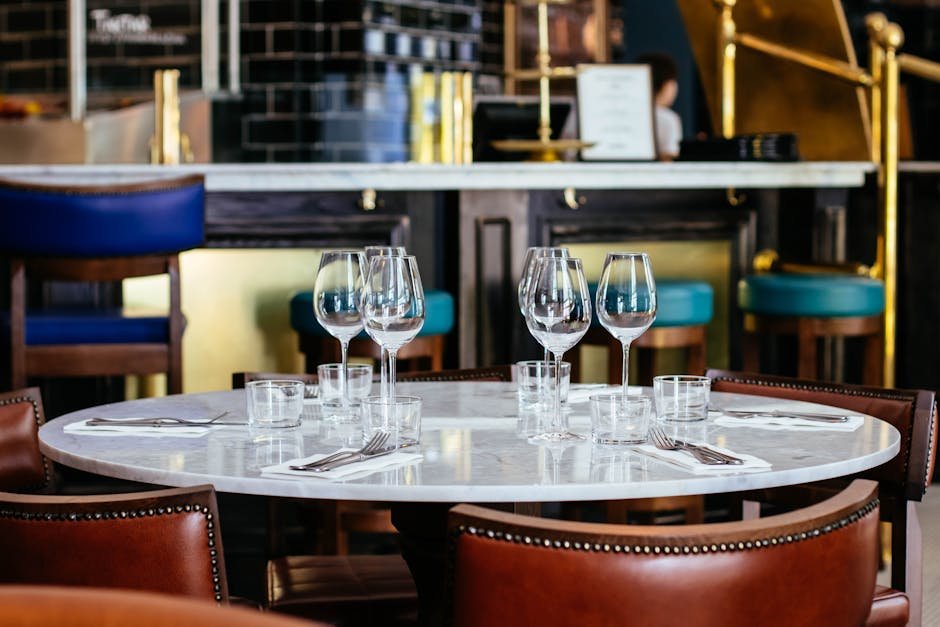Key Takeaways
- Lounge and Cafe denote distinct geopolitical zones with unique administrative, cultural, and geographic characteristics.
- Lounges often represent semi-autonomous or specially governed territories within larger political entities, whereas Cafes typically refer to smaller administrative districts or boroughs.
- The governance structures, population demographics, and economic roles of Lounges and Cafes differ significantly in their respective regions.
- Understanding the geopolitical nuances of Lounges and Cafes is essential for regional planning, resource allocation, and cultural preservation.
- Both terms, while similar in some administrative functions, play different roles in shaping local identity and political representation.
What is Lounge?

The term “Lounge” refers to a specific type of geopolitical boundary often characterized by a distinct governance model within a larger state or region. Lounges typically denote territories with semi-autonomous administrative powers, allowing for unique local legislative or cultural practices.
Autonomy and Administrative Structure
Lounges usually possess a degree of self-governance that sets them apart from standard administrative districts. This autonomy often includes localized lawmaking and tailored regulatory frameworks, which help manage regional affairs more effectively. For instance, some Lounges have their own councils that operate independently from the central government, allowing for policies that better reflect local priorities. This setup often leads to a hybrid political structure balancing local needs with national oversight.
Geographic and Demographic Characteristics
Geographically, Lounges can vary widely but often encompass regions with unique cultural or environmental features. These distinctions foster a strong regional identity among residents, who may speak different dialects or maintain traditional practices unique to the Lounge. Demographically, Lounges may have populations that differ ethnically or linguistically from surrounding areas, which underscores their special status. This demographic uniqueness often influences local policymaking and community initiatives.
Economic Role and Resource Management
Economically, Lounges frequently manage their own natural resources, which can be a source of regional wealth or specialization. For example, a Lounge might control mineral rights or agricultural production distinct from the national government’s purview. This control allows the Lounge to implement economic strategies that directly benefit its population. Resource management at this level often includes environmental protections tailored to local ecosystems.
Cultural Significance and Identity
The Lounge often acts as a cultural stronghold, preserving heritage and traditions that might be underrepresented at the national level. Festivals, language preservation programs, and educational curricula often emphasize local history within Lounges. This cultural focus helps maintain community cohesion and pride among residents. The Lounge’s identity is thus intertwined with its governance and social fabric.
Political Representation and Influence
Lounges typically hold a defined place within the broader political landscape, often sending representatives to national or regional assemblies. Their political influence can vary but is frequently enhanced by their semi-autonomous status and economic contributions. This representation ensures that Lounge-specific interests are considered in higher-level policymaking. Political alliances formed by Lounges may affect regional stability and intergovernmental relations.
What is Cafe?

The term “Cafe” in geopolitical context refers to a smaller administrative division, such as a district, borough, or municipality within a larger city or region. Cafes are primarily focused on local governance, community services, and urban planning.
Local Governance and Administrative Duties
Cafes function as basic units of local government, responsible for municipal services like sanitation, zoning, and public safety. Unlike Lounges, Cafes generally have limited legislative powers and operate under strict guidelines from higher authorities. Their governance structure often includes elected councils or mayors who oversee day-to-day operations. The focus is on efficient delivery of services to meet residents’ immediate needs.
Urban and Population Density Features
Cafes are typically situated within urban or suburban environments, often characterized by higher population densities. This density influences infrastructure development, housing policies, and transportation planning within the Cafe. The demographic makeup tends to be more diverse and fluid compared to Lounges, reflecting urban migration and economic opportunities. These factors drive the Cafe’s role in metropolitan governance.
Economic Activities and Infrastructure
The economic landscape of Cafes usually revolves around commerce, retail, and service industries that support urban life. Cafes are hubs for small businesses, markets, and cultural venues that cater to local residents and visitors alike. Infrastructure investments in Cafes prioritize roads, public transit, and utilities to accommodate dense populations. Economic planning within Cafes often involves balancing growth with sustainability.
Community Engagement and Public Services
Cafes emphasize community programs such as public education, recreational facilities, and health services tailored to local needs. They serve as focal points for civic participation, with residents frequently involved in neighborhood associations or advisory boards. Public safety initiatives in Cafes often include collaboration with municipal police and emergency services. These elements foster a strong sense of community and responsiveness to citizen concerns.
Political Integration and Representation
Cafes are fully integrated into the larger political system, typically lacking autonomous powers but holding importance as electoral districts. Representatives from Cafes participate in city councils or regional assemblies, contributing to governance within the broader municipality. Their political activities focus on urban issues such as housing affordability, infrastructure funding, and social services. The role of Cafes in political processes is crucial for grassroots engagement.
Comparison Table
The following table highlights key aspects distinguishing Lounges and Cafes in geopolitical contexts, illustrating their administrative, demographic, and socio-economic differences.
| Parameter of Comparison | Lounge | Cafe |
|---|---|---|
| Governance Model | Semi-autonomous with independent legislative authority | Subordinate local government under central municipal control |
| Geographic Scope | Larger territorial expanse often encompassing rural and cultural zones | Smaller urban or suburban districts within cities |
| Population Characteristics | Ethnically or culturally distinct communities with unique identities | Diverse urban populations with dynamic demographic shifts |
| Economic Base | Resource management and specialized regional industries | Commerce, retail, and service-oriented businesses |
| Political Representation | Direct representation in regional or national assemblies | Representation primarily in municipal councils |
| Public Services | Locally tailored services with some autonomy | Standardized urban services governed by city authorities |
| Cultural Role | Preservation of traditional customs and languages | Centers for contemporary urban cultural activities |
| Infrastructure Development | Focus on regional connectivity and sustainable resource use | Emphasis on urban infrastructure and public transit |
| Legal Jurisdiction | Possesses distinct legal frameworks within national law | Operates under uniform municipal legal codes |
| Community Engagement | Community-driven initiatives supported by local governance | Citizen participation through neighborhood councils and advisory boards |
Key Differences
- Degree of Autonomy — Lounges enjoy greater self-governance compared to Cafes, which function under tighter municipal control.
- Territorial Scale — Lounges usually cover broader geographic areas including rural zones, whereas Cafes are compact urban sectors.
- Cultural Distinctiveness — Lounges often reflect unique ethnic or cultural groups, while Cafes represent more mixed and transient urban populations.
- Economic Orientation — Lounges manage natural resources and regional industries, in contrast to Cafes’ focus on urban commerce and services.